This looks at further examples of British railway’s 4xD policy. That is Demote, Deconstruct, Dereliction and Destruction. I made that up but what it means is first a station was usually demoted. Services downgraded to the most basic. Then the track layout would be deconstructed, usually to a single platform at the far end of a many miles long siding. Following that an air of dereliction would be enthusiastically propagated. The result would of course be further falls in passenger numbers. Then bingo – the railway’s no longer viable. That means destruction was the final, glorious, achievement.
This is what we looked at in the first part of this feature. This second part continues our look at that sort of contrived ‘modernisation’ shit, except in these cases it was rather an abandonment of the railway’s original terminus, a minimal replacement being offered some distance back down the track – and the intervening space given over to car parking.
However the same four D’s are in fact applicable – because the same progression was utilised. First a terminus was relegated, its services being reduced to the bare minimum, then the track rationalised because it no longer justified the services running upon it. Then it was allowed to take on an air of dereliction. In that immediate period between dereliction and destruction, a new (often bus stop type) terminus was built as an ‘alternative’ and the original terminus was demolished. In one or two examples it didn’t happen with the original terminus instead being given over to other uses. This can be seen at places like Morecambe and Windsor.
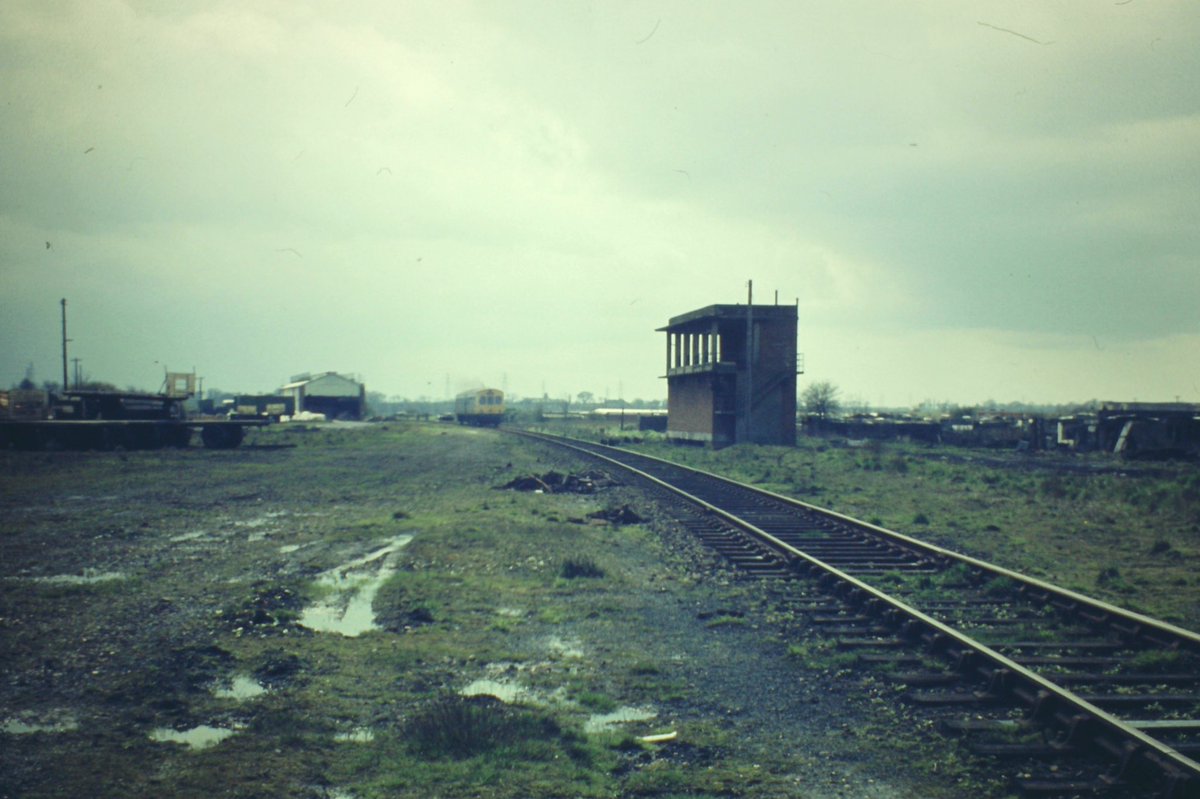
The huge goods yard and engine sheds/sidings at the once fine and mighty Yarmouth Southtown terminus. Reduced from a substantial main line terminus which once had express trains through to London by a choice of routes. It became a mere single track whose somewhat remaining and unforgiving train services trundled their way through apocalyptic scenes. British Railways couldn’t get rid of this line fast enough – and it did so despite huge objections. Source: Twitter.
Hunstanton (the main feature in the first part) was shown as one of the most extreme examples of British Railways slash and burn policy. There were many others – Broad Street, Yarmouth Southtown/Beach, Leicester Central, Nottingham Akeman Street (the whole Great Central in fact) the Southern route to Padstow, Mablethorpe, Manchester Central – among many other stations that were soon reduced to the obligatory single track jamboree, before an air of considerable dereliction pervaded and the services completely withdrawn. Following that the stations and vacant railway alignments would be flogged off.
As I have just said, in these examples instead of scrapping the railway service completely what was done was to shift the terminus some way off the original site and then give the intervening space over to yes you’ve guessed it, car parking! Ironically this meant motorists had better access to towns and seaside resorts than the rail travellers themselves!
Balloch Central/Pier
Who the f**k needs a rail served pier? Force the passengers to walk from the nearest landlubber’s station. Oh yes. Lazy contrived rail passengers indeed! While we are at it let’s give that other station a bit of a downgrade too and at the same time shift it just that little bit further back! Make the passengers sweat…
This is the result….

The rather meagre Balloch station. Its not even ‘Central’ anymore is it? Source: Google Streets.
The original station was known as Balloch Central and sited on the other side of the road. It was considerably modernised as part of the Glasgow area’s rail network’s early sixties upgrade.
Balloch Central/Pier stations and the associated railway has so far been the UK’s one and only substantial closure of a 25kv AC electric system & associated stations.
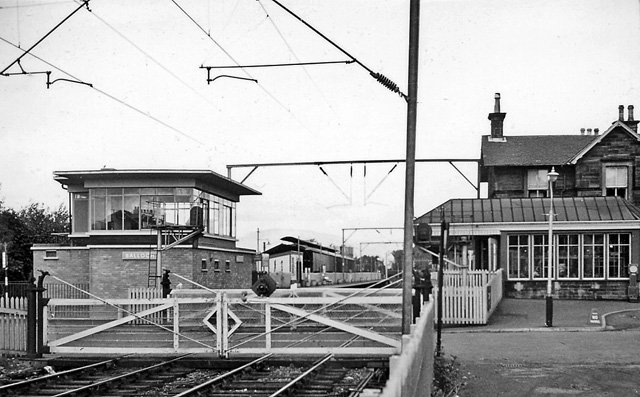
Balloch Central in 1961 just after the line had been electrified. Source: Twitter.

A lovely shot of a Class 303 at Balloch Central in July 1966. Source: Pinterest.
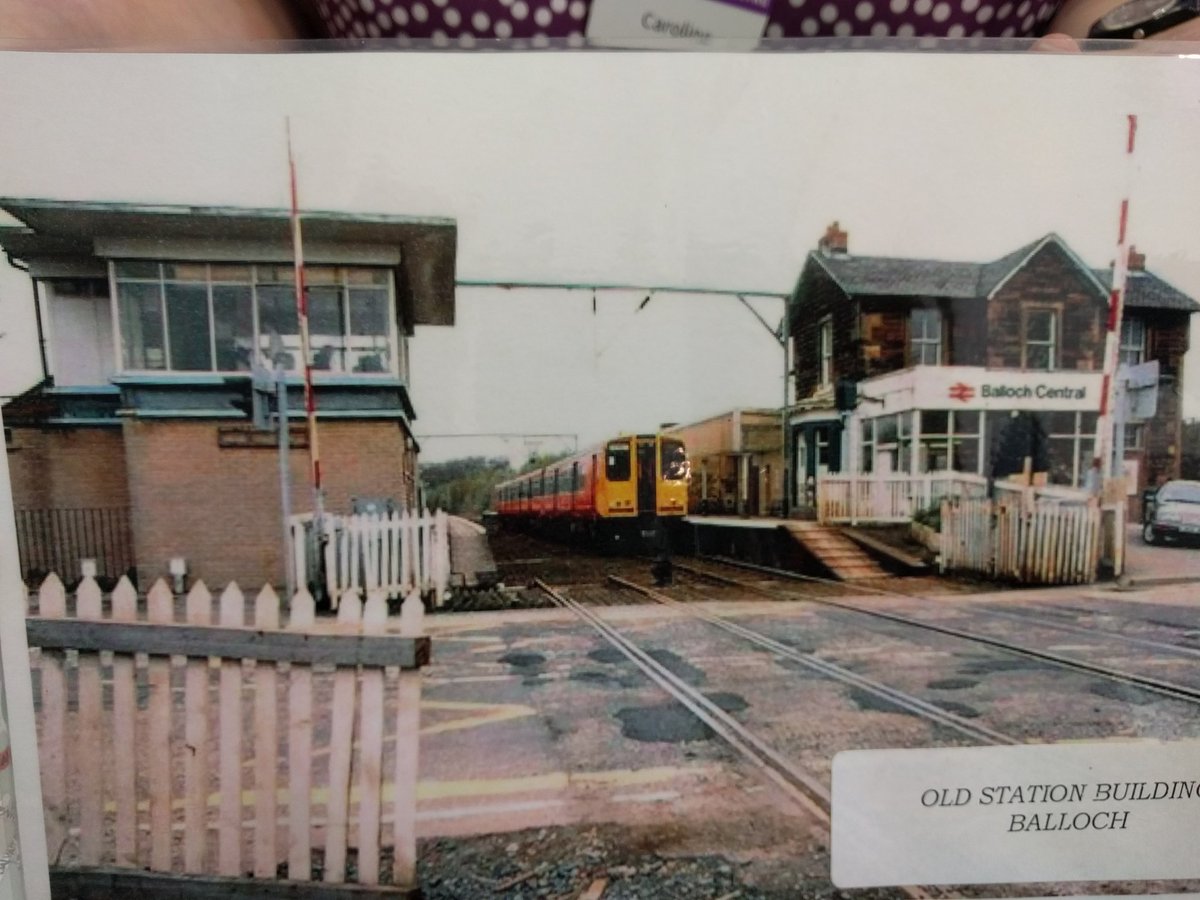
The station after it had been downgraded to single track. The line to Balloch Pier still existed but would soon be closed. Source: Twitter.
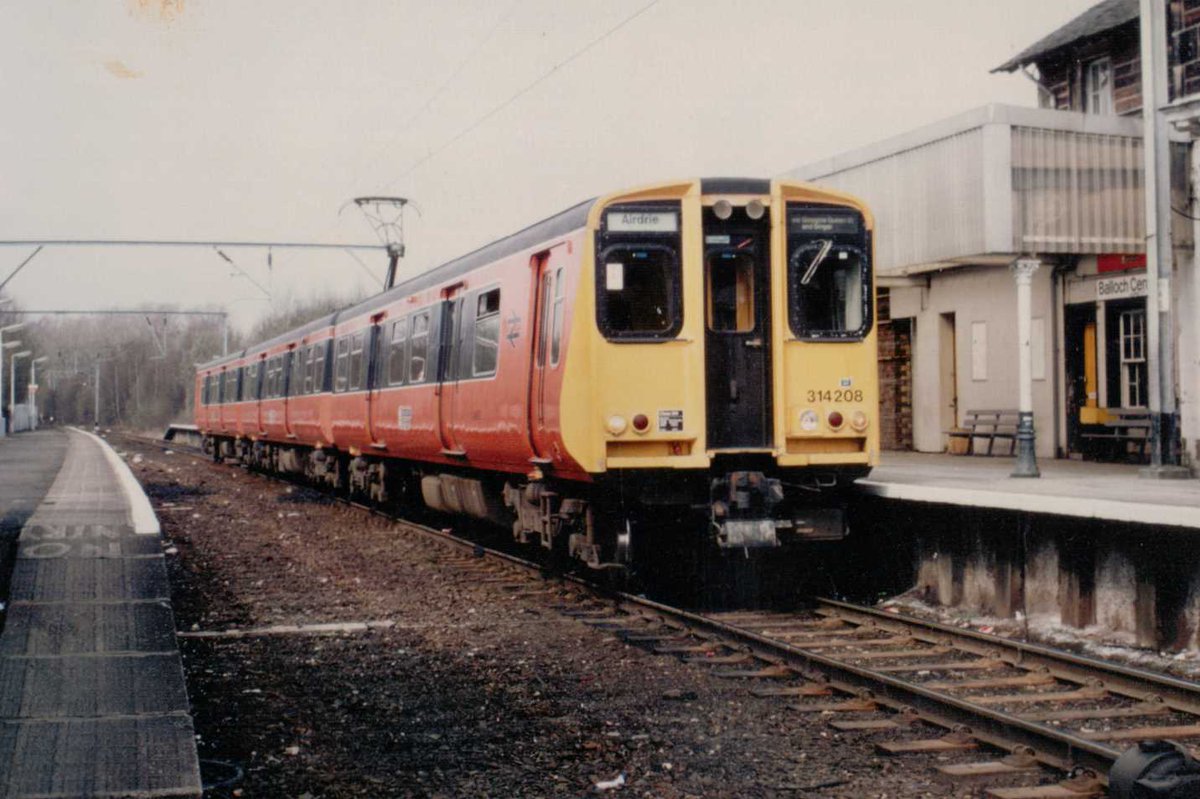
Class 314 at Balloch Central prob 1984-85. It has just arrived from Balloch Pier. Source: Twitter.
As for Balloch Pier? It was given a modernised electric service. And guess what? British Rail closed the station in 1986 – that’s 24 years after its services were electrified.

Balloch Pier with Central at the top of picture. No doubt the line’s closure saved British Rail a few fishplates! Source: Parks Watch Scotland.
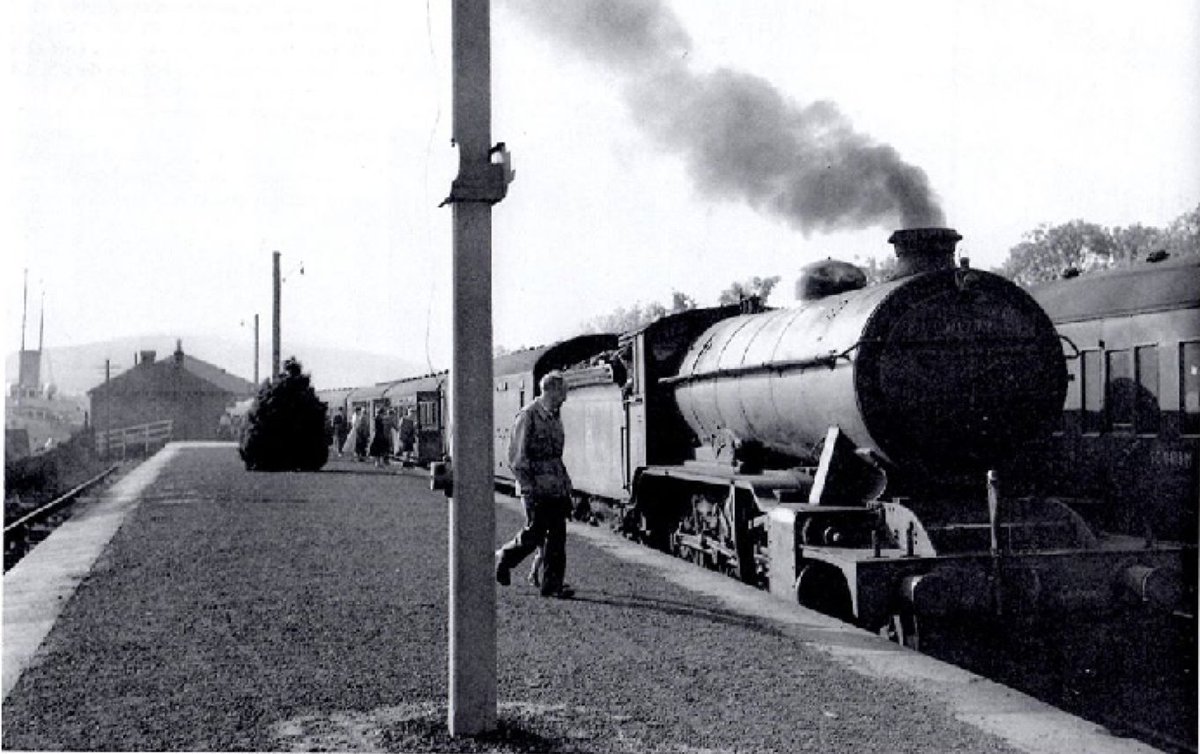
Balloch Pier station in 1957 a few years before electrification took place. Source: Twitter.
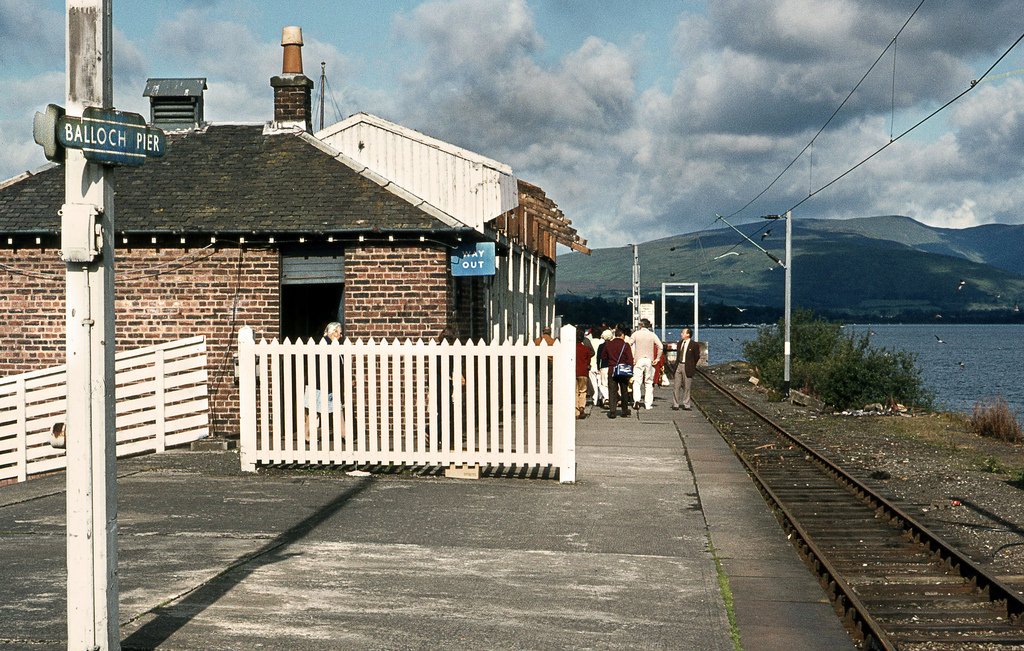
Balloch Pier with the wires up. Source: Twitter.

Class 303 at the pier station in 1963. As this scene shows it retained two platforms – both of which seemed quite well used. Source: Twitter.
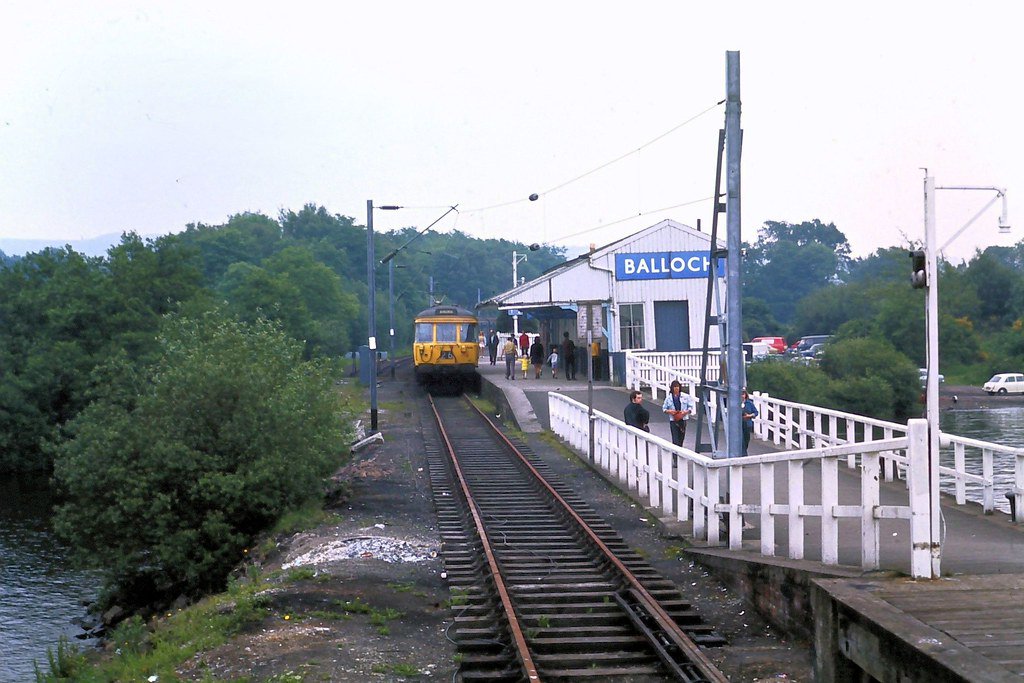
Balloch Pier in 1973 with a train at platform 1. Source: Twitter.
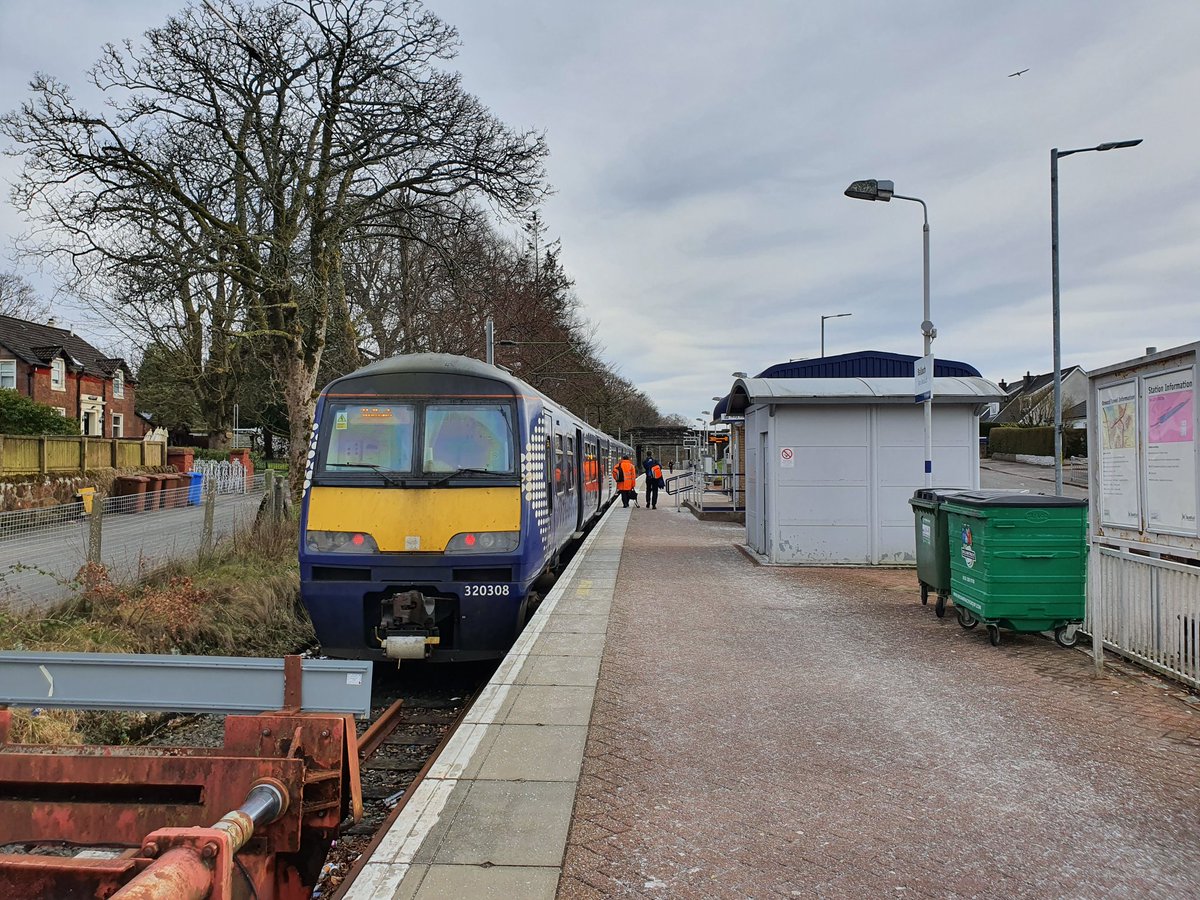
The current successor to both Balloch Pier and Balloch Central. A cheerful single track terminus with rudimentary facilities. Source: Twitter.
Why did they move the station southwards? Well, British Railways, knowing how it worked, saw that the level crossing in the town centre wasn’t of much use, thus it concluded the site would be much better becoming a proper road full stop. No need for these infernal trains to be crossing a road of any sort. Again it was the ‘modernisation.’ You see, it wasn’t about the trains but rather giving motorists the best possible freedoms.
I bet British Rail didn’t even reduce the fares one iota when they moved the station southwards!
Blackpool Central/South
This once vast station was ‘replaced’ by the next one along the line (Blackpool South.) No surprise that station too got the boot and was reduced from a substantial station to the obligatory bus stop style thingy. The land in between was of course given over to the one important thing the railway authorities just couldn’t get out of their deluded minds – the motor car!
Yes there’s Blackpool North these days and its just been hugely modernised and given the wires. But in a sense Blackpool Central would have done a better job. Still we’re stuck with Blackpool North and at least the town is now building a new section of tramway from Talbot Square to Blackpool North station – which I suppose is some sort of salvation – in a way it too does sort of make up for the mad sixties/seventies rail evisceration polices.
But it still leaves us with that stupid thing at Blackpool South – sort of okay for the Pleasure Beach if one can tolerate the mediocre rail service! In fact its so contrived there’s been suggestions the line should be given over to the town’s tramway system (even a canal waterbus service was tried at one time it seems…) There’s often been talk of extending the trams from Starr Gate and then utilising the route through Lytham St Annes – which means of course means the bit of line to Blackpool South finally gets blasted off into space…
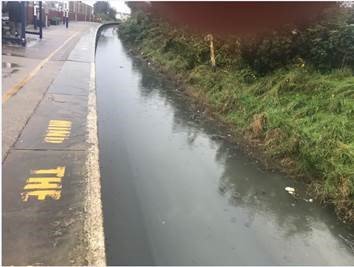
Yikes! At one time a trial waterbus service was attempted in lieu of trains! Source: Twitter.
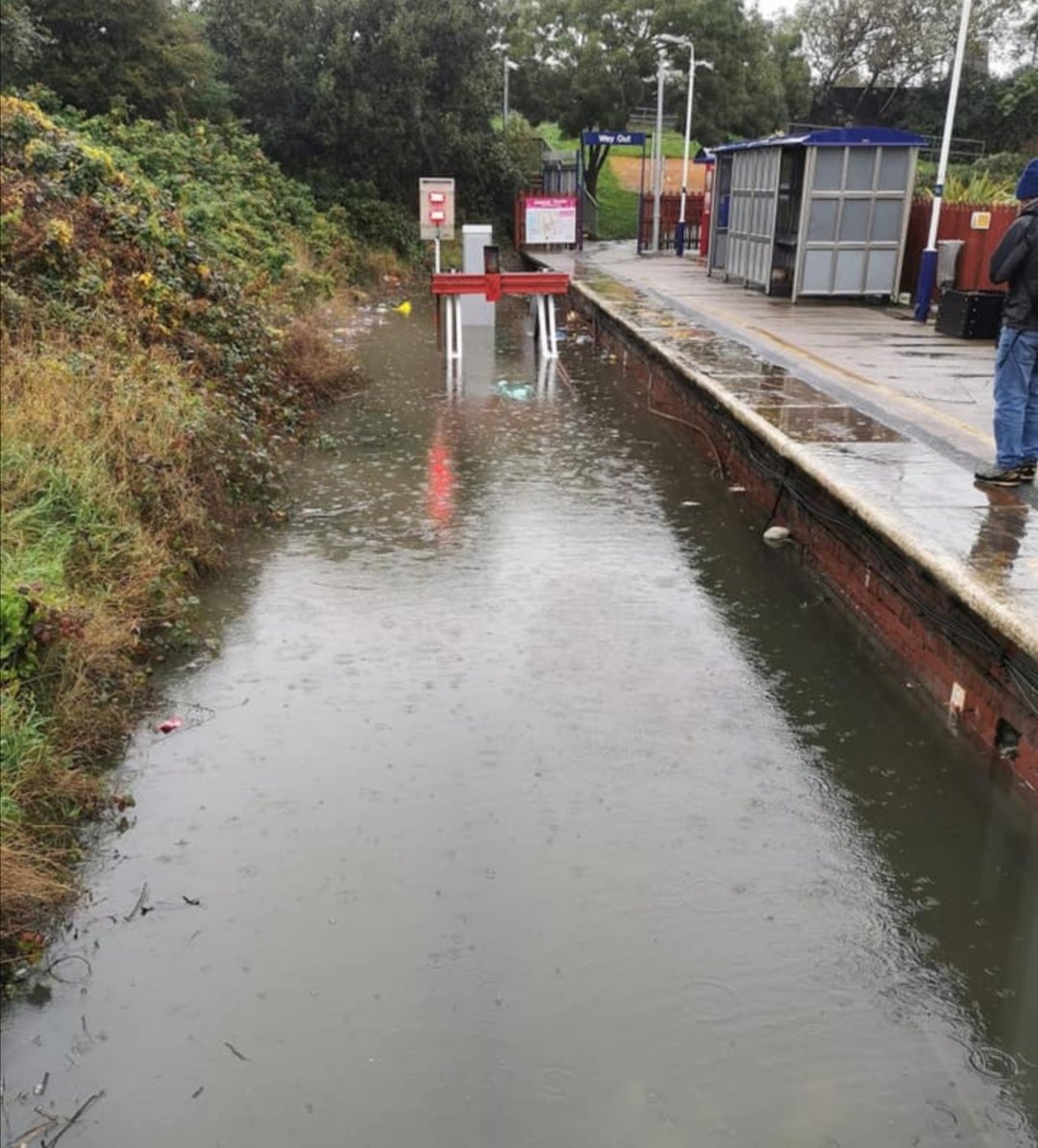
End of the line canal! Source: Twitter.

No photos are known to exist of the waterbuses – but somebody managed to draw one of those from memory! Source: Twitter.
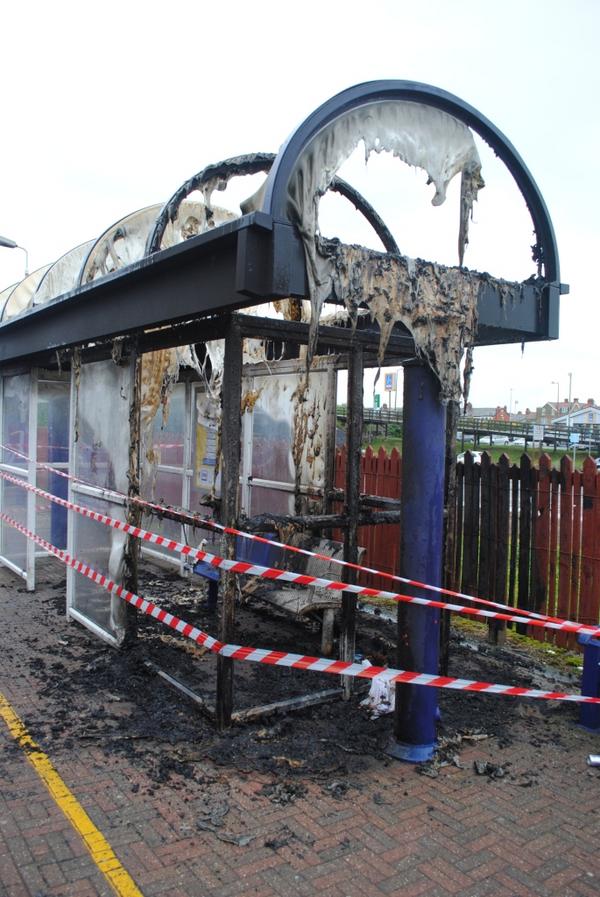
It seems the bus stop style thingy that’s ‘Blackpool South’ isn’t popular! Easy target for vandals. Source: Twitter.
Did I forget to talk about Blackpool Central…? Oops, so sorry about that! Here we go!

This is Blackpool Central. Once upon a time it was a big station almost right on the promenade! Source: Twitter.
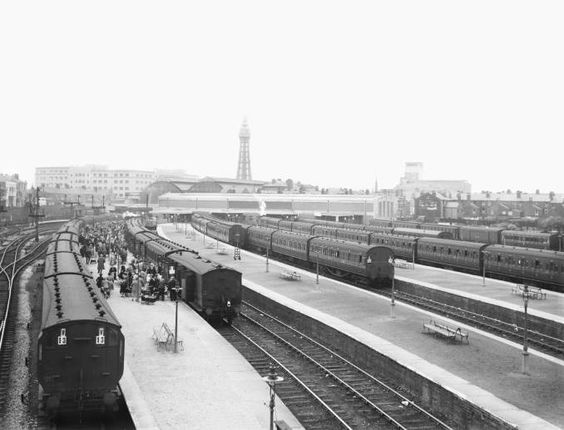
The station in 1939. Source: Twitter.
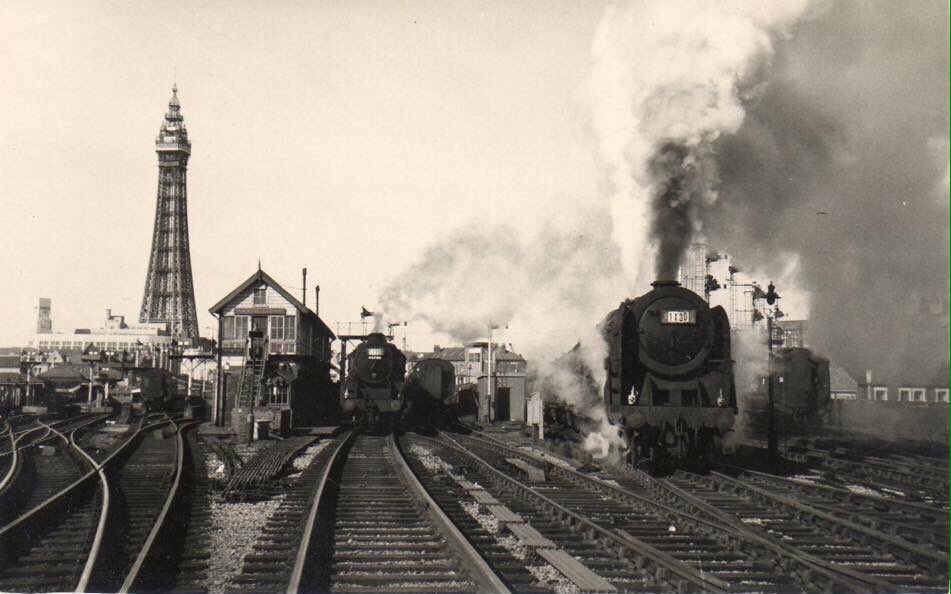
Plenty of trains and the Tower just a short distance away. Source: Twitter.

Blackpool Central’s engine sheds and sidings. Source: Twitter (Note: The account has been either suspended or protected thus an archived image is used.)
The station was controversially closed in 1964. However British Railways were confident Blackpool South and Blackpool North would do the job just as well…
(They were totally way off the mark!)
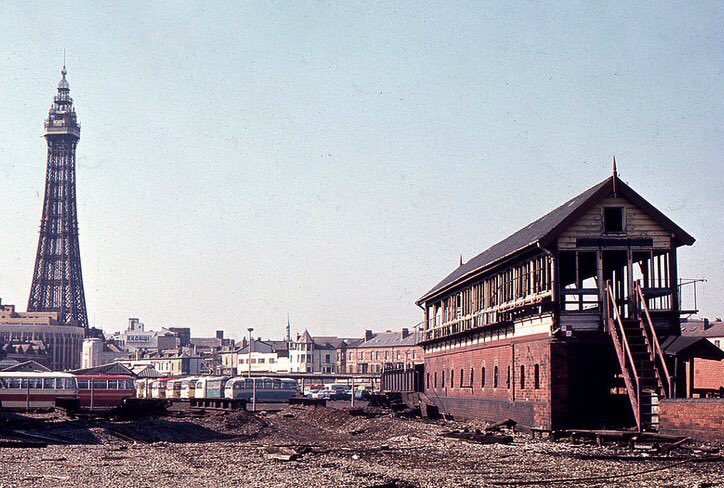
Sadly BR thought the Central site would be better used for cars and tourist coaches. Source: Twitter. (Post no longer exists).
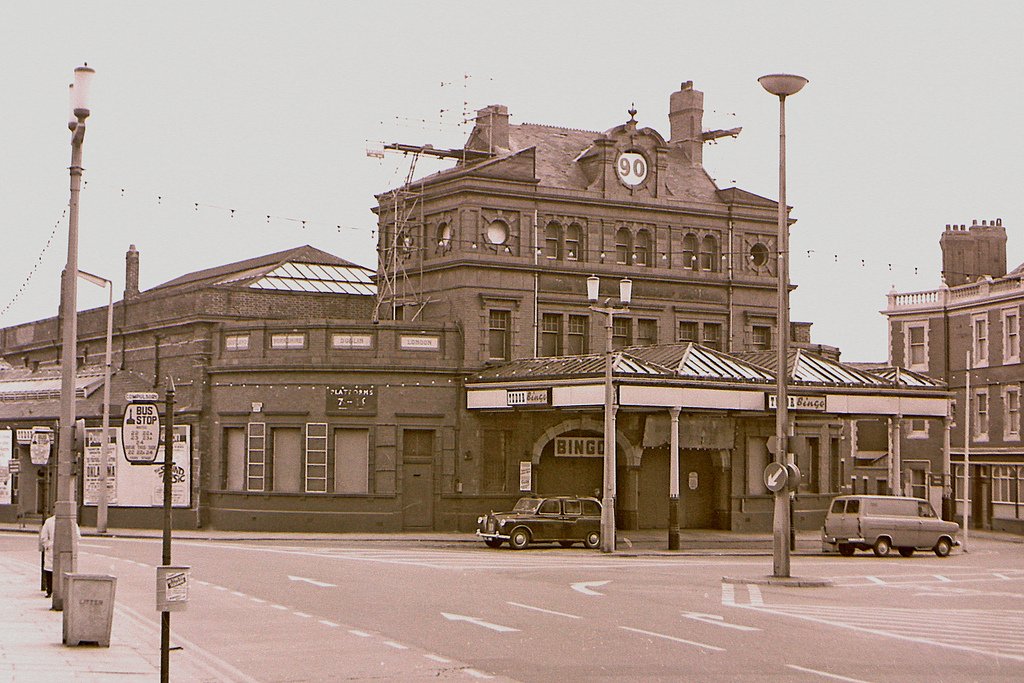
After closure, Central station became a bingo hall. In due course it was demolished and replaced by a police station – now too demolished! Source: Twitter.
